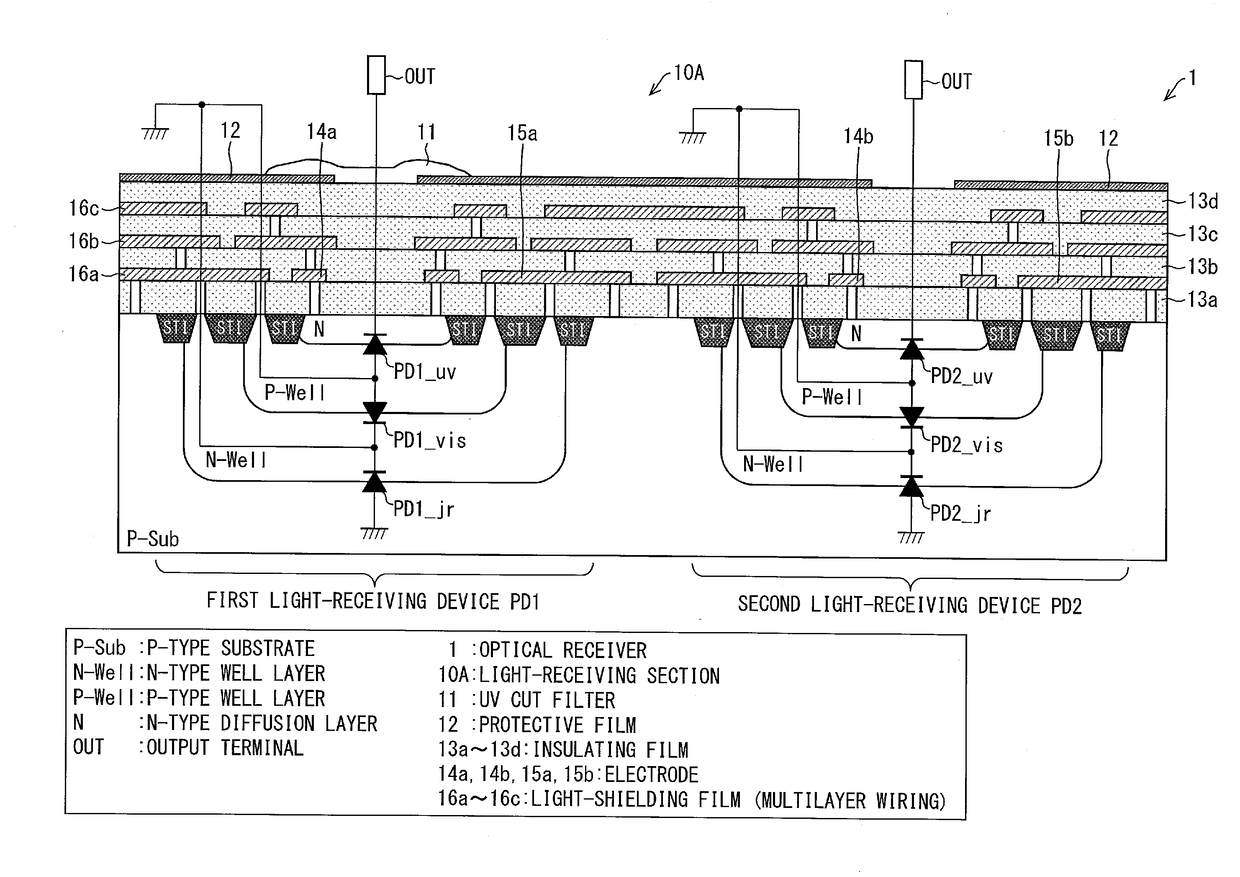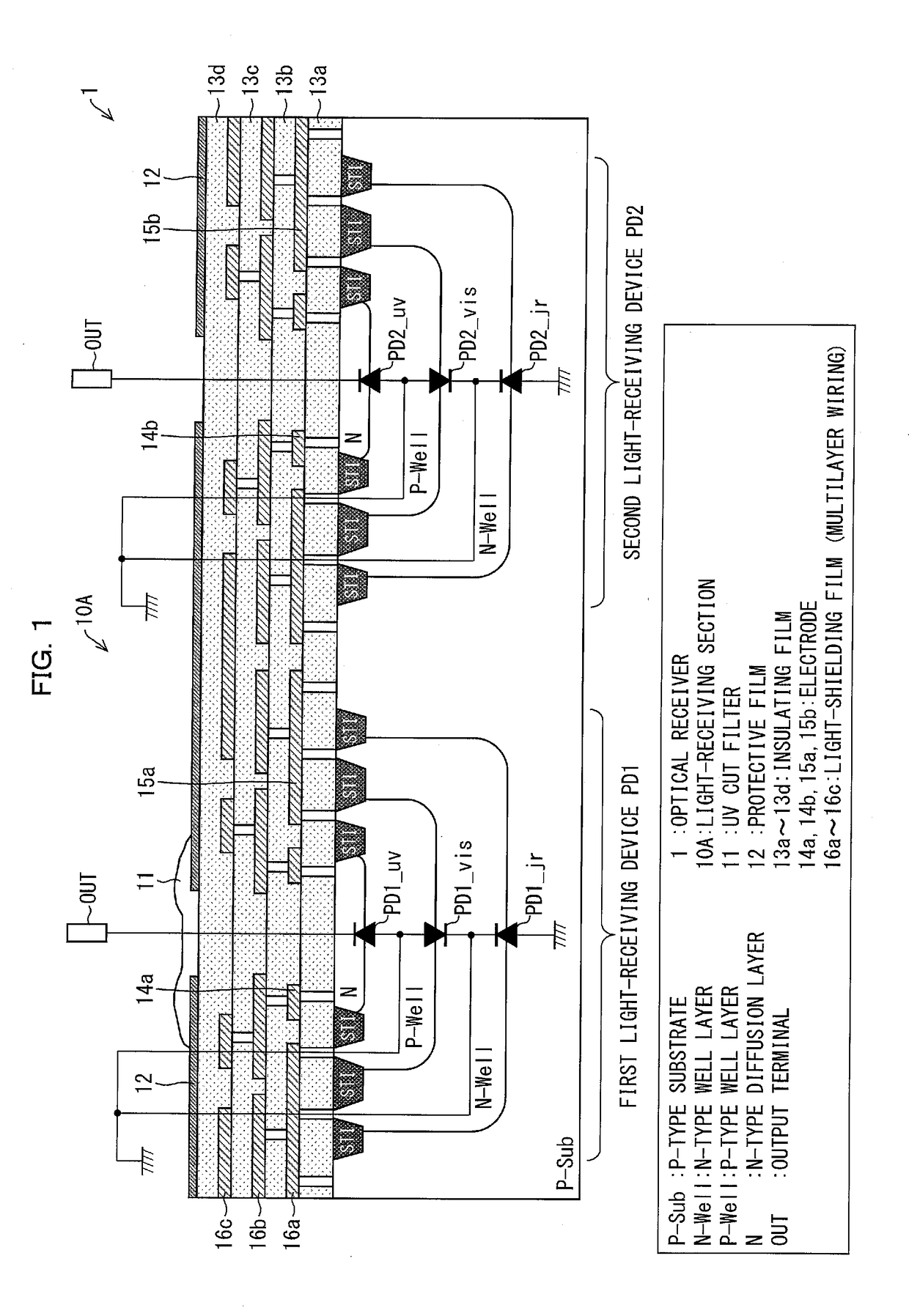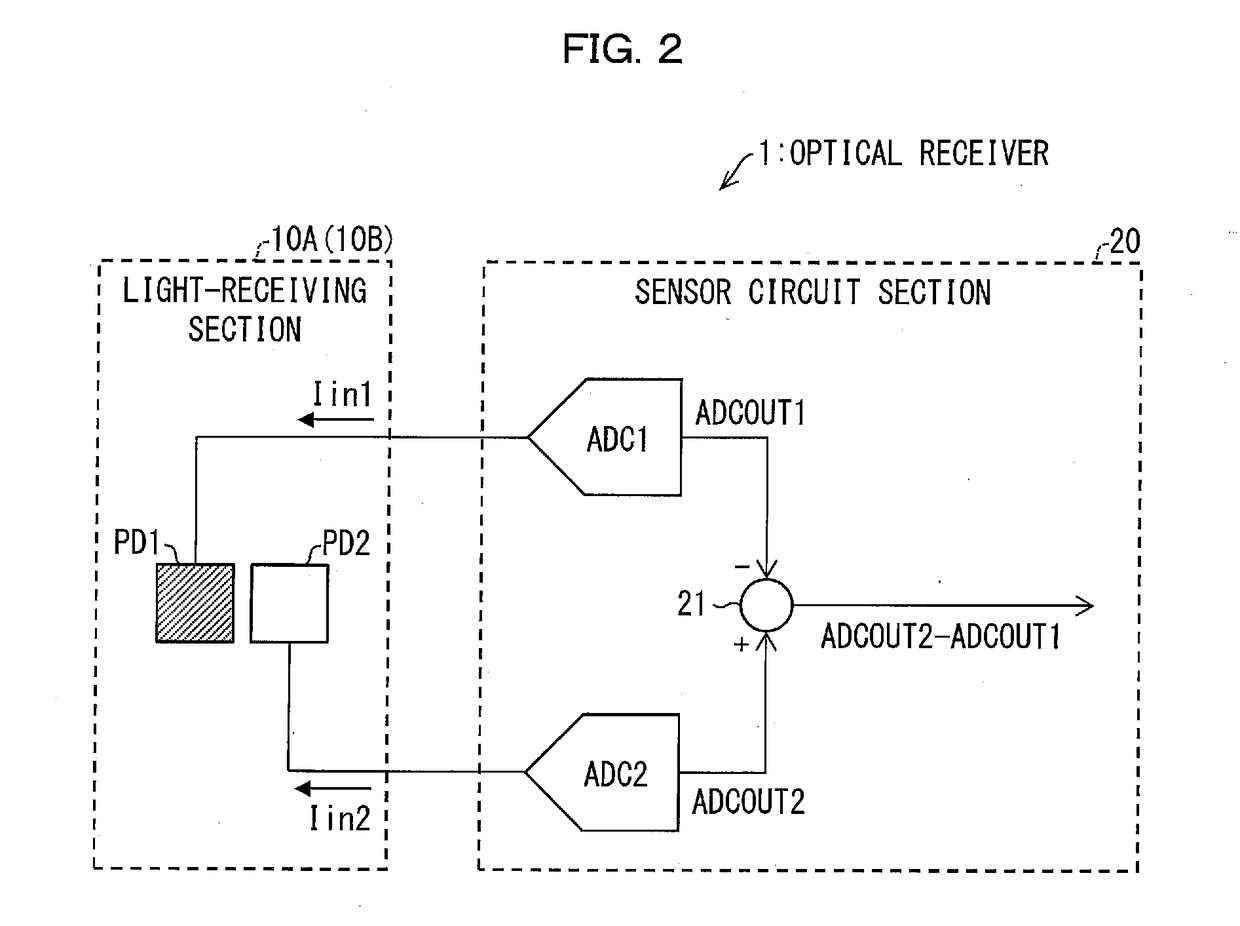Optical receiver, portable electronic device, and method of producing optical receiver
- Summary
- Abstract
- Description
- Claims
- Application Information
AI Technical Summary
Benefits of technology
Problems solved by technology
Method used
Image
Examples
embodiment 1
[0042]An embodiment of the present invention can be described based on FIGS. 1 to 7 as follows.
[0043]An optical receiver 1 of the embodiment will be described based on FIGS. 1 to 3. FIG. 1 is a cross-sectional view illustrating the structure of a light-receiving section 10A of the optical receiver 1 according to the embodiment. FIG. 2 is a block diagram illustrating the structure of the optical receiver 1 of the embodiment. FIG. 3 is a plan view illustrating the structure of the light-receiving section 10A of the optical receiver 1.
[0044]The optical receiver 1 of the embodiment is, as shown in FIG. 2, a light sensor including a light-receiving section 10A for allowing photocurrent to flow by incidence of light and a sensor circuit section 20 for detecting the intensity of the light based on the photocurrent. The optical receiver 1 can be loaded on a portable electronic device, such as a smartphone, as a photoelectric conversion device. The components will now be described one by one...
embodiment 2
[0121]Another embodiment of the present invention can be described based on FIGS. 2, 3, and 8 to 11 as follows. The structures other than those described in this embodiment are the same as those in Embodiment 1. In addition, for convenience of explanation, members having the same functions as those of the members shown in the drawings of Embodiment 1 are denoted by the same reference symbols, and the descriptions thereof are omitted.
[0122]The optical receiver 1 of this embodiment includes, as shown in FIGS. 2 and 3, a light-receiving section 10B as in the light-receiving section 10A described in Embodiment 1. Incidentally, in FIGS. 2 and 3, the function of the light-receiving section 10B is the same as that of the light-receiving section 10A, and the description thereof is therefore omitted.
[0123]The light-receiving section 10B of the optical receiver 1 in the embodiment differs from the light-receiving section 10A of the optical receiver 1 in Embodiment 1 in that, as shown in FIG. ...
embodiment 3
[0141]Further another embodiment of the present invention can be described as follows. The structures other than those described in this embodiment are the same as those in Embodiments 1 and 2. In addition, for convenience of explanation, members having the same functions as those of the members shown in the drawings of Embodiments 1 or 2 are denoted by the same reference symbols, and the descriptions thereof are omitted.
[0142]The light-receiving section 10A of Embodiment 1 and the light-receiving section 10B of Embodiment 2 are each composed of triple diffusion layers. Specifically, an N-type well layer N_well being a second conductivity-type N-type diffusion layer as a first diffusion layer is formed on a P-type substrate P_sub; a first conductivity-type P-type substrate P_sub as a second diffusion layer is formed in the first diffusion layer; and an N-type diffusion layer N as a second conductivity-type third diffusion layer is formed in the second diffusion layer.
[0143]However, ...
PUM
 Login to View More
Login to View More Abstract
Description
Claims
Application Information
 Login to View More
Login to View More - R&D
- Intellectual Property
- Life Sciences
- Materials
- Tech Scout
- Unparalleled Data Quality
- Higher Quality Content
- 60% Fewer Hallucinations
Browse by: Latest US Patents, China's latest patents, Technical Efficacy Thesaurus, Application Domain, Technology Topic, Popular Technical Reports.
© 2025 PatSnap. All rights reserved.Legal|Privacy policy|Modern Slavery Act Transparency Statement|Sitemap|About US| Contact US: help@patsnap.com



